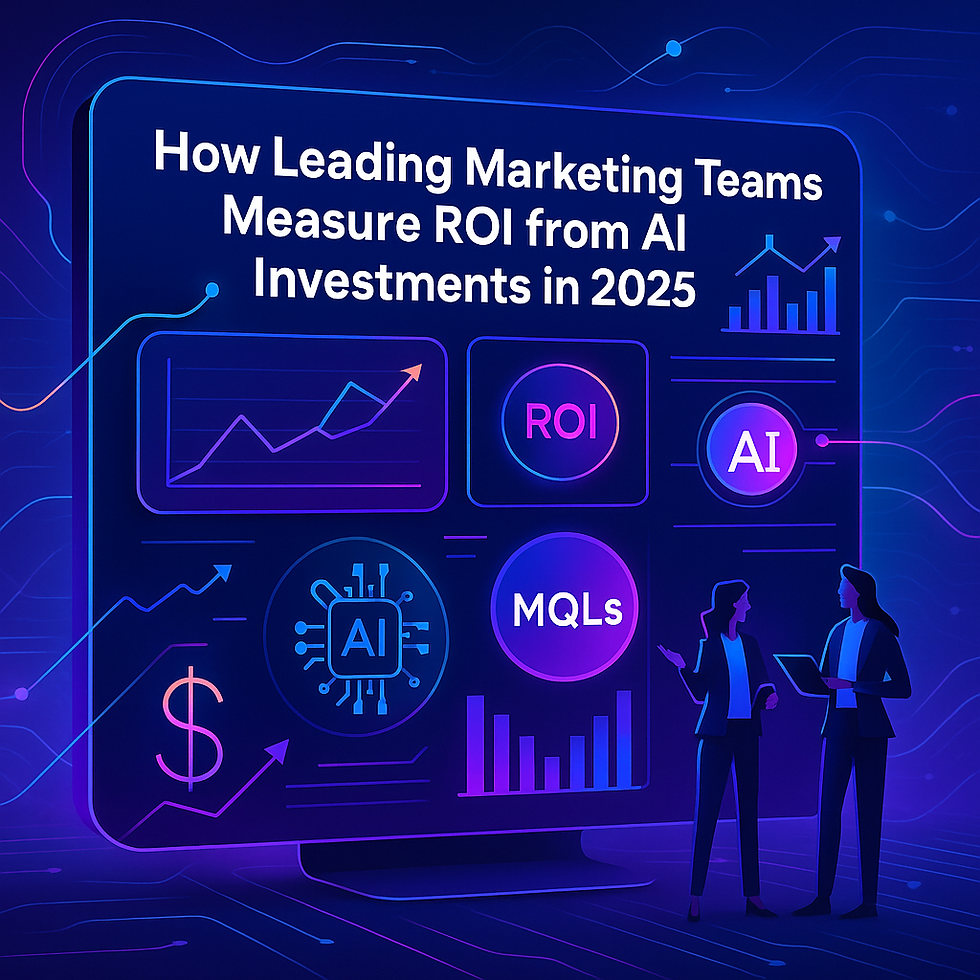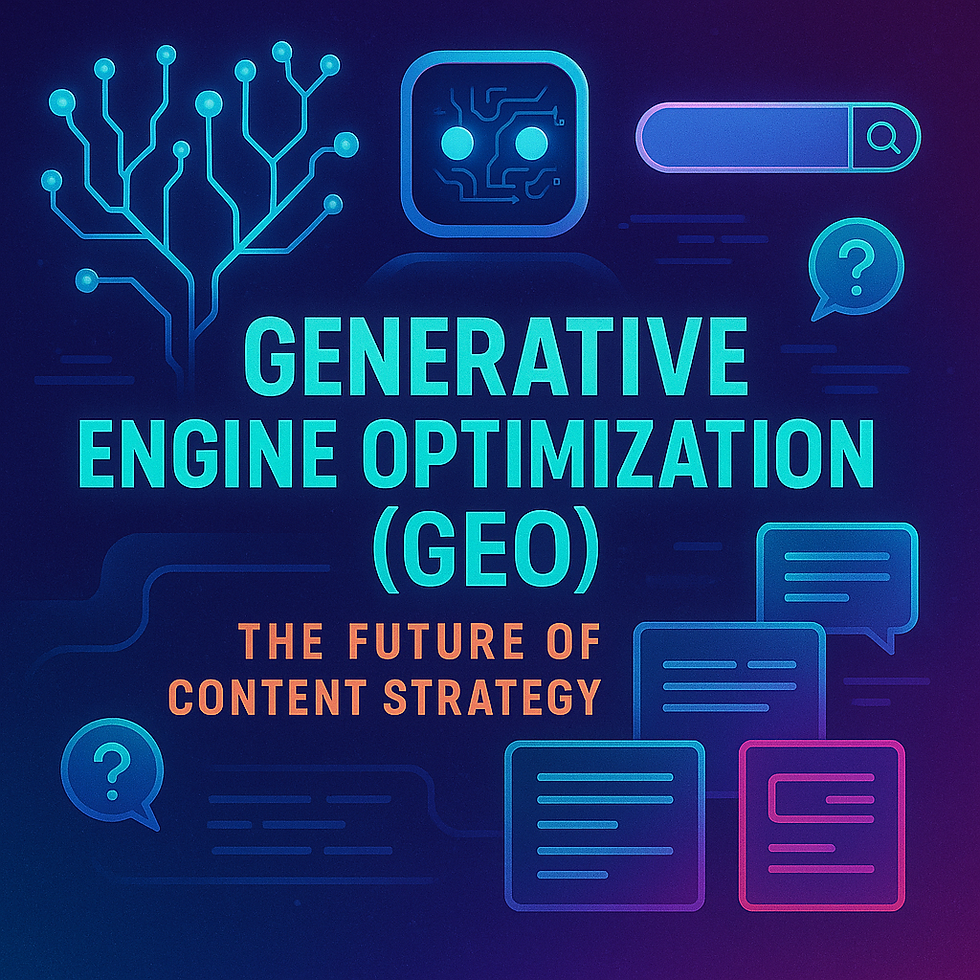How Leading Marketing Teams Measure ROI from AI Investments in 2025
- Youssef Moutik
- Aug 3
- 2 min read

AI has transformed marketing dramatically, enabling unprecedented efficiency, targeting precision, and data-driven decision-making. However, with increasing investment in AI, understanding and accurately measuring return on investment (ROI) has become a critical challenge for marketing leaders.
Here's how top marketing teams are effectively measuring ROI from AI investments in 2025:
What Metrics are Marketing Teams Using?
Marketing teams leading the way in AI-driven strategies focus on these key metrics:
AI Contribution to Revenue: How much of the revenue can be directly attributed to AI-powered marketing activities?
Cost Reduction and Efficiency Gains: How significantly has AI reduced operational costs or improved speed and productivity?
Customer Lifetime Value (CLTV): Has AI improved customer retention and increased overall lifetime value?
Churn Prediction and Prevention: How accurately can AI predict and reduce customer churn, leading to measurable financial outcomes?
How to Calculate AI Investment ROI
The calculation for AI ROI typically looks like this:
AI ROI (%) = [(Revenue from AI activities - Cost of AI investment) / Cost of AI investment] × 100
Revenue should factor in both direct sales uplift attributed to AI and indirect financial gains (such as improved productivity, cost savings, or increased CLTV).
When to Measure AI ROI
Leading marketing teams track ROI at multiple stages:
Initial Pilot Phase: Measure ROI quickly to validate the potential and feasibility of the AI solution.
Scaling Phase: Regularly monitor returns as you expand usage to ensure consistent benefits.
Long-Term Integration: Continuously measure performance annually to understand long-term value and optimize strategies.
Tools and Platforms Marketing Teams Rely On
Top marketing teams utilize integrated AI analytics tools, including:
AI-driven Analytics Platforms (such as Adobe Sensei or Salesforce Einstein): Provide automated insights into campaign effectiveness.
Predictive Analytics Tools (such as DataRobot or H2O.ai): Predict outcomes, optimize strategies, and quantify future ROI.
Unified Data Platforms: Tools that integrate all customer data and AI metrics into one unified dashboard for clear, actionable insights.
What Challenges Marketing Teams Face
Common challenges in measuring AI ROI include:
Attribution Complexity: Precisely attributing revenue or efficiency gains directly to AI is often challenging.
Data Integration Issues: Consolidating data from multiple AI-driven platforms to produce a unified view is complicated but crucial.
Changing Algorithms and Models: Constantly evolving AI models require adaptive measurement strategies.
How to Improve Your AI ROI Measurement
To better measure and optimize AI ROI, marketing teams should:
Set Clear KPIs and Benchmarks: Establish transparent, agreed-upon metrics for AI success.
Maintain Consistent Data Practices: Use standardized methodologies to measure performance and financial outcomes.
Conduct Regular Reviews: Periodically evaluate AI performance, adjusting investments and strategies accordingly.
Looking Ahead: The Future of AI ROI
By continuously refining measurement methods and embracing new analytics technologies, leading marketing teams will remain ahead in effectively quantifying AI-driven success.
In short, accurately measuring AI ROI has evolved into an essential capability for marketing leaders. By embracing structured measurement approaches and leveraging advanced analytics, teams can ensure their AI investments consistently yield significant returns.
.png)


Comments